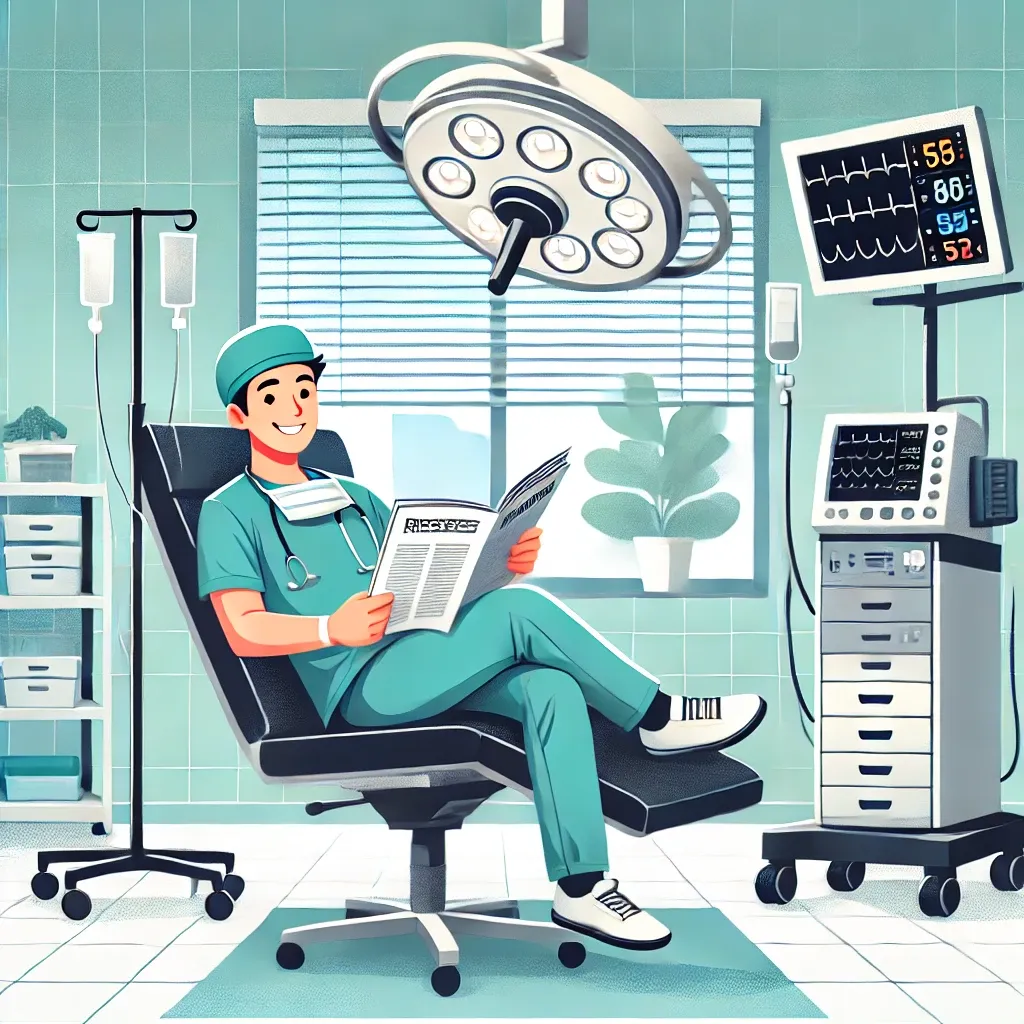Preoperative oral caffeine as prophylaxis against post-spinal hypotension in patients undergoing orthopedic lower limb surgery: A randomized, placebo-controlled, double-blinded study
A preoperative administration of 200 mg caffeine tablet can reduce hypotensive episodes and ephedrine requirements within the first hour of spinal anesthesia.
The Takeaway
A preoperative administration of 200 mg caffeine tablet can reduce hypotensive episodes and ephedrine requirements within the first hour of spinal anesthesia.
Study Design
- Randomized placebo-controlled double blind study of 80 adults
- Inclusion criteria: ASA status I or II, 18-70 years old undergoing unilateral lower extremity orthopedic surgery with tourniquet
- Exclusion criteria: refusal to participate, failed spinal anesthesia,
uncontrolled hypertension, arrhythmia, history of myocardial or cerebral infarction within the last 6 months, contraindications to spinal anesthesia, and caffeine allergy - Intervention: preoperative single dose oral caffeine 200-mg tablet versus
placebo - Primary Outcome: number of patients with one or more hypotensive episodes within the first hour of spinal anesthesia, defined as MAP < 60 mmHg or a >20% decrease from baseline
Physiology Refresh
Hypotension following spinal anesthesia occurs primarily due to sympathetic blockade. Local anesthetic injected into the subarachnoid space blocks sympathetic nerve fibers, particularly the preganglionic fibers emerging from the thoracolumbar spine (T1–L2). This leads to vasodilation of both arterial and venous vessels. Arterial vasodilation decreases systemic vascular resistance, while venodilation reduces venous return (preload), both contributing to a drop in cardiac output and blood pressure. If the block reaches T1–T4, cardiac sympathetic fibers may be affected, resulting in unopposed parasympathetic tone and bradycardia, further worsening hypotension.
Spinal anesthesia can also trigger the Bezold-Jarisch reflex. Sympathetic blockade and subsequent systemic vasodilation reduces preload. This can result in a relatively empty but hypercontractile left ventricle, particularly in patients with high vagal tone or in upright positions.
Within the inferoposterior wall of the left ventricle, mechanicoreceptors, detect this state of vigorous contraction in an underfilled ventricle. These receptors are part of the cardiac afferent system, and become activated when myocardial wall stretch is insufficient during contraction—a scenario that paradoxically signals to the body a need to reduce cardiac work.
Once activated, these C-fiber afferents transmit signals via the vagus nerve (cranial nerve X) to the nucleus tractus solitarius (NTS) in the medulla. The NTS processes this input and enhances parasympathetic outflow via the vagus, while simultaneously inhibiting sympathetic efferents from the rostral ventrolateral medulla.
The result is:
- Bradycardia, due to increased vagal stimulation of the SA and AV nodes.
- Peripheral vasodilation, from reduced sympathetic tone.
- Profound hypotension, due to the combined effects on heart rate and systemic vascular resistance.
At the molecular level, this reflex involves:
- Increased acetylcholine release at muscarinic M2 receptors in the heart, slowing pacemaker activity.
- Reduced norepinephrine release at sympathetic nerve terminals, limiting vasoconstriction.
Recent studies indicate the premedicaiton with ondansetron can help prevent the Bezold-Jarisch reflex following spinal anesthesia, and reduce post spinal hypotension.
Caffeine is a central nervous system stimulant that antagonizes adenosine receptors in the brain. Under normal conditions, adenosine accumulates in the extracellular space during wakefulness, binding to A1 and A2A receptors. This binding inhibits neuronal activity, promoting sleep and vasodilation. In particular, the A1 receptors are widespread in the brain and inhibit excitatory neurotransmitter release, while A2A receptors are highly concentrated in the basal ganglia and modulate dopamine activity.
Caffeine, due to its structural similarity to adenosine, competes for these receptors — blocking adenosine’s inhibitory effects. The blockade of A1 receptors results in increased release of neurotransmitters like dopamine, norepinephrine, and acetylcholine, enhancing alertness and reducing perceived fatigue.
Abstract
Background: This study aimed to investigate the efficacy of preoperative a caffeine tablet as prophylaxis against post-spinal hypotension in adult patients undergoing lower extremity orthopedic surgery.
Methods: Patients aged 18-70 years who underwent lower limb orthopedic surgery were enrolled. In the caffeine group, the patient ingested a 200 mg caffeine tablet. In the control group, the patient ingested a placebo. The primary outcome was the number of patients with one or more hypotensive episodes within the first hour of spinal anesthesia, which was defined as a decrease in mean arterial pressure (MAP) < 60 mmHg or a >20% decrease in MAP from baseline. The secondary outcomes were the number of patients who received ephedrine and the amount of ephedrine per patient within the first hour of spinal anesthesia.
Results: 80 patients were randomized to the caffeine group (n = 40) and control group (n = 40). One patient in the caffeine group was lost to follow-up. The number of patients with one or more hypotensive episodes within the first hour of spinal anesthesia was significantly lower (p = 0.013) in the caffeine group (n = 6, 15.3%) than in the control group (n = 17, 42.5%). The number of patients who received ephedrine as well as the amount of ephedrine per patient within the first hour of spinal anesthesia were significantly lower in the caffeine group than in the control group.
Conclusion: The preoperative ingestion of a 200 mg caffeine tablet could decrease the number of patients with hypotensive episodes and ephedrine requirements within the first hour of spinal anesthesia.
Excerpts
A single oral dose of caffeine (80 to 300 mg) increased the systolic arterial pressure (SAP) by approximately 3–8 mmHg and the diastolic arterial pressure (DAP) by 4–6 mmHg. The arterial pressure increases 30 min after caffeine ingestion, peaking within 60–90 min and returning to baseline after 2 to 4 hours
All patients were instructed to discontinue the administration of any form of caffeine at least 8 hours before surgery
The number of patients with one or more hypotensive episodes within the first hour of spinal anesthesia was significantly lower (p=0.013) in the caffeine group (n=6, 15.3%) than in the control group (n=17, 42.5%)
the time to first hypotensive episode within the first hour of spinal anesthesia in patients who developed it was significantly longer (p<0.001) in the caffeine group (35.5±8.4 min) than in the control group (17.2±5.9 min)
The number of patients who received ephedrine within the first hour of spinal anesthesia was significantly lower (p=0.013) in the caffeine group (n=6, 15.3%) than in the control group (n=17, 42.5%). The amount of ephedrine per patient in patients who received it within the first hour of spinal anesthesia was significantly lower (p=0.033) in the caffeine group (12.5±5.2) than in the control group (18.8±6.1)
Post-spinal hypotension is induced by the activation of the Bezold-Jarisch (BJ) reflex with subsequent stimulation of serotonin-sensitive mechanoreceptors and chemoreceptors (5-HT3 receptors), which are located in the ventricular walls. These receptors are not activated only by hypervolemia but also by the relative hypovolemia caused by spinal anesthesia. The activated 5-HT3 receptors send and receive afferent and efferent impulses to and from the medulla via the vagal nerves, resulting in severe vagal stimulation and sympathetic blockade, causing bradycardia and hypotension.
Post-spinal hypotension can be explained by another mechanism, the reverse Bainbridge reflex. Spinal anesthesia is associated with a decrease in heart rate, blood pressure, and right atrial pressure. The reverse Bainbridge reflex decreases the heart rate by decreasing the right atrial pressure following spinal anesthesia. Bradycardia aggravates post-spinal hypotension. Intraoperative arterial hypotension decreases tissue perfusion in the brain, heart, and kidney which could affect the perioperative outcomes
Oral caffeine is absorbed very rapidly mainly in the small intestine, with a peak plasma concentration within 30 min and a plasma half-life of 4-6 hours. Oral caffeine has been reported to affect the cardiovascular system for up to 24 hours. The acute effects of oral caffeine on arterial pressure reach the peak within 30 to 90 min and continue for at least 3 hours in both hypertensive and nonhypertensive men and women.
Citation
Antar SS, Metaweh A, Neamatallah H, Abdelfattah M, Abdelbaser I, Awad KA. Preoperative oral caffeine as prophylaxis against post-spinal hypotension in patients undergoing orthopedic lower limb surgery: A randomized, placebo-controlled, double-blinded study. Anaesth Crit Care Pain Med. 2025 May 1:101537. doi: 10.1016/j.accpm.2025.101537. Epub ahead of print. PMID: 40318850.

